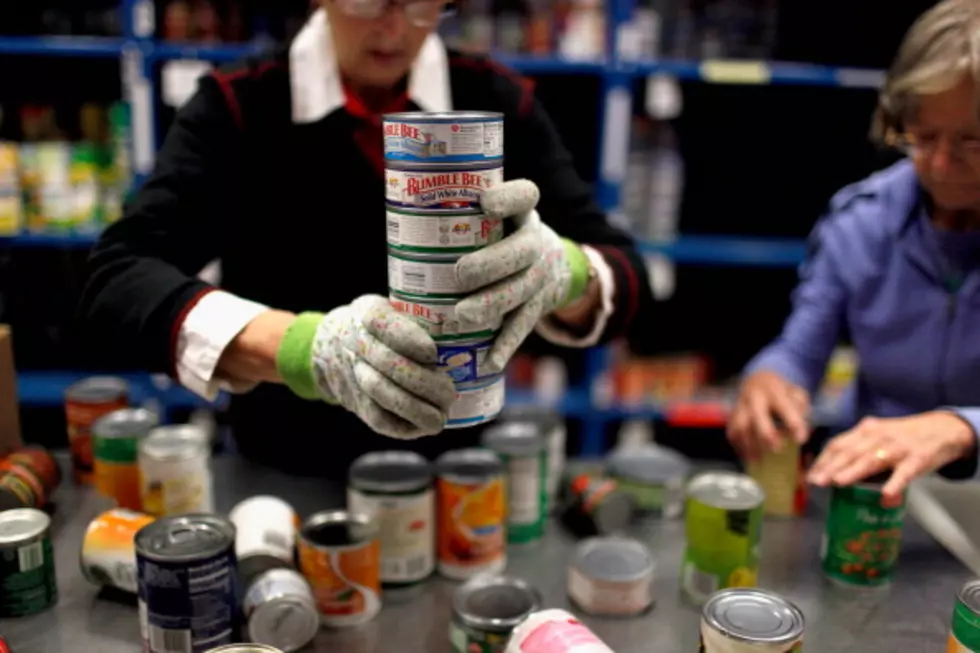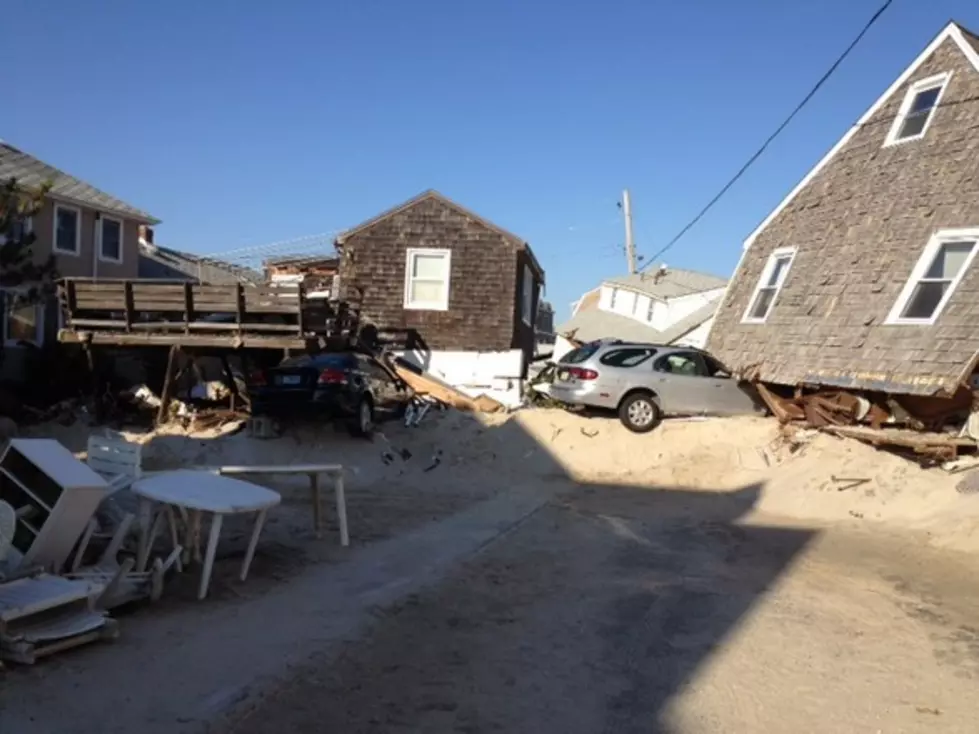
Which Foods Are Safe After the Power Goes Out?
We've all heard the importance of keeping non-perishable foods in the home in case of an emergency. In fact, several New Jersey grocery store and market shelves have been nearly emptied in preparation for Hurricane Sandy. Despite this, there are still lots of questions that arise about food left in cabinets, freezers and refrigerators in the wake of a natural disaster. Knowing the facts about food safety after a power outage can save you money and potentially spare you from illness.
According to the USDA Food Safety and Inspection Service, the ABCDs of keeping food safe during an emergency are as follows:
Always keep meat, poultry, fish, and eggs refrigerated at or below 40 °F and frozen food at or below 0 °F. This may be difficult when the power is out.
Keep the refrigerator and freezer doors closed as much as possible to maintain the cold temperature. The refrigerator will keep food safely cold for about 4 hours if it is unopened. A full freezer will hold the temperature for approximately 48 hours (24 hours if it is half full) if the door remains closed. Obtain dry or block ice to keep your refrigerator as cold as possible if the power is going to be out for a prolonged period of time. Fifty pounds of dry ice should hold an 18-cubic foot full freezer for 2 days. Plan ahead and know where dry ice and block ice can be purchased.
| When to Save and When to Throw It Out | |
|---|---|
| FOOD | Held above 40 °F for over 2 hours |
| MEAT, POULTRY, SEAFOOD Raw or leftover cooked meat, poultry, fish, or seafood; soy meat substitutes | Discard |
| Thawing meat or poultry | Discard |
| Meat, tuna, shrimp,chicken, or egg salad | Discard |
| Gravy, stuffing, broth | Discard |
| Lunchmeats, hot dogs, bacon, sausage, dried beef | Discard |
| Pizza – with any topping | Discard |
| Canned hams labeled "Keep Refrigerated" | Discard |
| Canned meats and fish, opened | Discard |
| CHEESE Soft Cheeses: blue/bleu, Roquefort, Brie, Camembert, cottage, cream, Edam, Monterey Jack, ricotta, mozzarella, Muenster, Neufchatel, queso blanco, queso fresco | Discard |
| Hard Cheeses: Cheddar, Colby, Swiss, Parmesan, provolone, Romano | Safe |
| Processed Cheeses | Safe |
| Shredded Cheeses | Discard |
| Low-fat Cheeses | Discard |
| Grated Parmesan, Romano, or combination (in can or jar) | Safe |
| DAIRY Milk, cream, sour cream, buttermilk, evaporated milk, yogurt, eggnog, soy milk | Discard |
| Butter, margarine | Safe |
| Baby formula, opened | Discard |
| EGGS Fresh eggs, hard-cooked in shell, egg dishes, egg products | Discard |
| Custards and puddings | Discard |
| CASSEROLES, SOUPS, STEWS | Discard |
| FRUITS Fresh fruits, cut | Discard |
| Fruit juices, opened | Safe |
| Canned fruits, opened | Safe |
| Fresh fruits, coconut, raisins, dried fruits, candied fruits, dates | Safe |
| SAUCES, SPREADS, JAMS Opened mayonnaise, tartar sauce, horseradish | Discard if above 50 °F for over 8 hrs. |
| Peanut butter | Safe |
| Jelly, relish, taco sauce, mustard, catsup, olives, pickles | Safe |
| Worcestershire, soy, barbecue, Hoisin sauces | Safe |
| Fish sauces (oyster sauce) | Discard |
| Opened vinegar-based dressings | Safe |
| Opened creamy-based dressings | Discard |
| Spaghetti sauce, opened jar | Discard |
| BREAD, CAKES, COOKIES,PASTA, GRAINS Bread, rolls, cakes, muffins, quick breads, tortillas | Safe |
| Refrigerator biscuits,rolls, cookie dough | Discard |
| Cooked pasta, rice, potatoes | Discard |
| Pasta salads with mayonnaise or vinaigrette | Discard |
| Fresh pasta | Discard |
| Cheesecake | Discard |
| Breakfast foods –waffles, pancakes, bagels | Safe |
| PIES, PASTRY Pastries, cream filled | Discard |
| Pies – custard,cheese filled, or chiffon; quiche | Discard |
| Pies, fruit | Safe |
| VEGETABLES Fresh mushrooms, herbs, spices | Safe |
| Greens, pre-cut, pre-washed, packaged | Discard |
| Vegetables, raw | Safe |
| Vegetables, cooked; tofu | Discard |
| Vegetable juice, opened | Discard |
| Baked potatoes | Discard |
| Commercial garlic in oil | Discard |
| Potato Salad | Discard |
| Frozen Food |
| When to Save and When To Throw It Out | ||
|---|---|---|
| FOOD | Still contains ice crystals and feels as cold as if refrigerated | Thawed. Held above 40 °F for over 2 hours |
| MEAT, POULTRY, SEAFOOD Beef, veal, lamb, pork, and ground meats | Refreeze | Discard |
| Poultry and ground poultry | Refreeze | Discard |
| Variety meats (liver, kidney, heart, chitterlings) | Refreeze | Discard |
| Casseroles, stews, soups | Refreeze | Discard |
| Fish, shellfish, breaded seafood products | Refreeze. However, there will be some texture and flavor loss. | Discard |
| DAIRY Milk | Refreeze. May lose some texture. | Discard |
| Eggs (out of shell) and egg products | Refreeze | Discard |
| Ice cream, frozen yogurt | Discard | Discard |
| Cheese (soft and semi-soft) | Refreeze. May lose some texture. | Discard |
| Hard cheeses | Refreeze | Refreeze |
| Shredded cheeses | Refreeze | Discard |
| Casseroles containing milk, cream, eggs, soft cheeses | Refreeze | Discard |
| Cheesecake | Refreeze | Discard |
| FRUITS Juices | Refreeze | Refreeze. Discard if mold, yeasty smell, or sliminess develops. |
| Home or commercially packaged | Refreeze. Will change texture and flavor. | Refreeze. Discard if mold, yeasty smell, or sliminess develops. |
| VEGETABLES Juices | Refreeze | Discard after held above 40 °F for 6 hours. |
| Home or commercially packaged or blanched | Refreeze. May suffer texture and flavor loss. | Discard after held above 40 °F for 6 hours. |
| BREADS, PASTRIES Breads, rolls, muffins, cakes (without custard fillings) | Refreeze | Refreeze |
| Cakes, pies, pastries with custard or cheese filling | Refreeze | Discard |
| Pie crusts, commercial and homemade bread dough | Refreeze. Some quality loss may occur. | Refreeze. Quality loss is considerable. |
| OTHER Casseroles – pasta, rice based | Refreeze | Discard |
| Flour, cornmeal, nuts | Refreeze | Refreeze |
| Breakfast items –waffles, pancakes, bagels | Refreeze | Refreeze |
| Frozen meal, entree, specialty items (pizza, sausage and biscuit, meat pie,convenience foods) | Refreeze | Discard |
See Frequently Asked Questions about topics including cleaning kitchenware, when it's safe to refreeze food, and the proper steps to salvage cans after flooding.
More From New Jersey 101.5 FM









